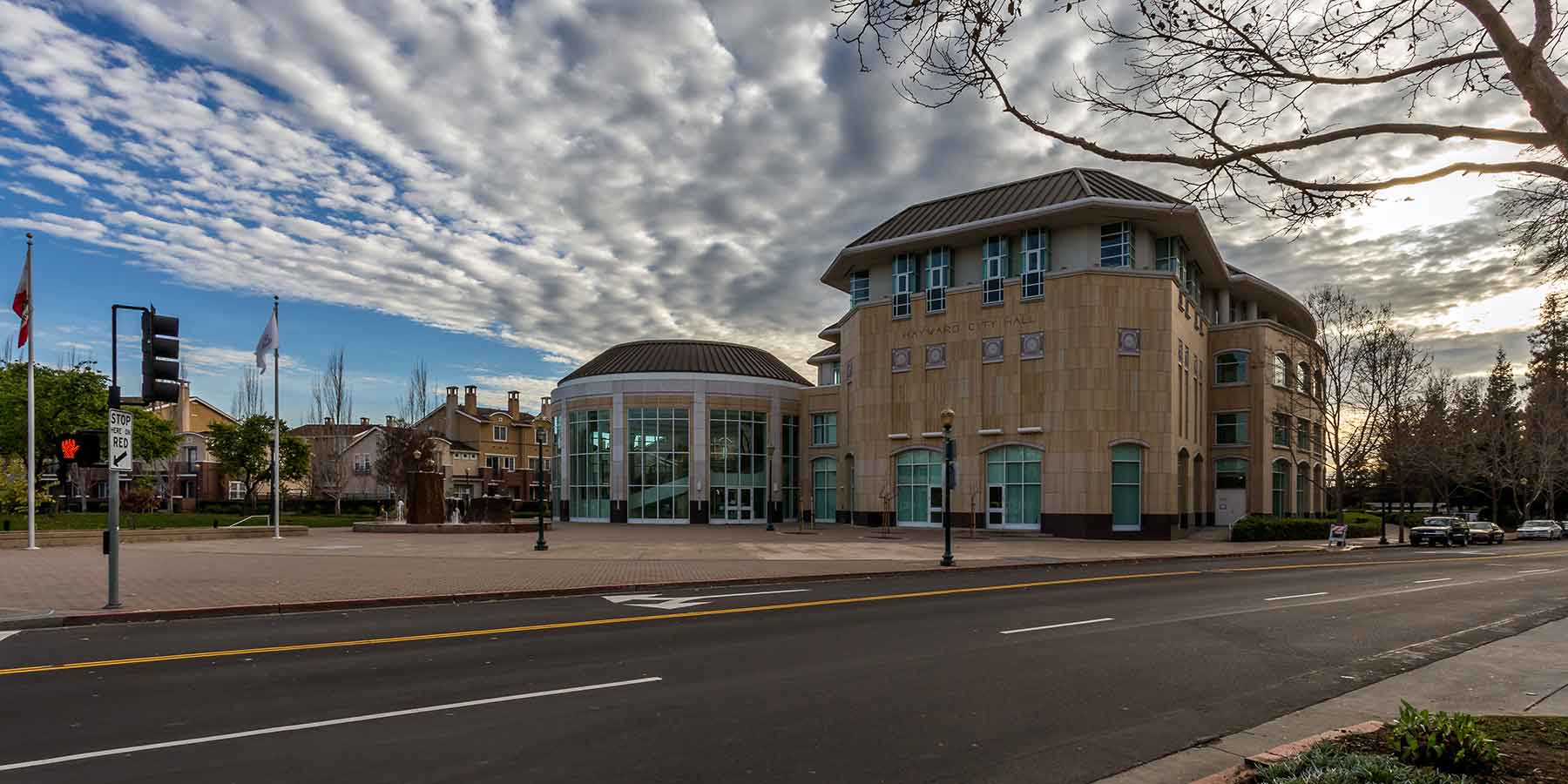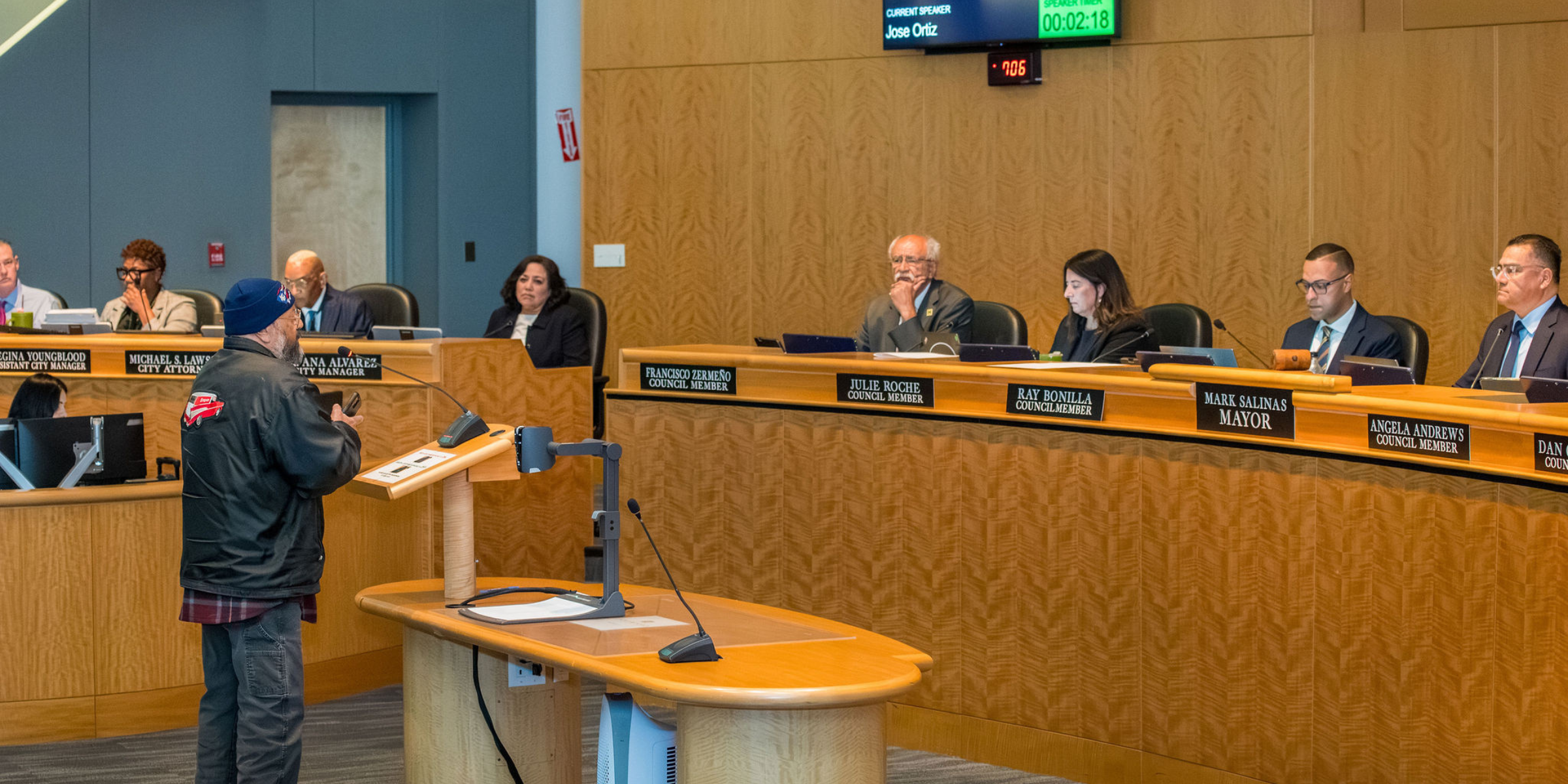Current & Projected GHG Emissions
Hayward GHG Emissions Inventory
Community GHG inventories measure the GHG emissions generated by residents and businesses operating in the community, as well as municipal operations. The process of creating a GHG inventory includes first identifying activities that are major sources of emissions and collecting summary data on those activities for a calendar year. Then, the City uses science-based GHG emissions factors to convert the collected activity data into GHG emissions produced. Inventories measure GHG emissions in units of metric tons of carbon dioxide equivalent, or MT CO2e.
GHG Inventory Protocols
Emissions estimates were calculated using the International Council for Local Environmental Initiatives (ICLEI) methodologies, specifically, the United States Community Protocol for Accounting and Reporting Greenhouse Gas Emissions Version 1.2 (Community Protocol) is used for communitywide emission. The Community Protocol is an authoritative guide for best practices in calculating community-scale GHG inventories. The protocol separates a city’s GHG-generating activities into categories known as emissions sectors. Large emissions sectors for cities include the transportation sector (such as combustion emissions from cars and other vehicles operating within the city), the building sector (including emissions from electricity and natural gas usage), and the waste sector (capturing emissions from sending solid waste to the landfill). Not all activities within a city that generate GHGs are included in a GHG emissions inventory. Activities that cannot be controlled or influenced by city policies are generally excluded as they have little bearing on city planning. For example, emissions from cars traveling through a city, whose origins and destinations are both outside of city limits, are typically excluded because a local government cannot reasonably influence this pass-through travel activity.
Current Inventory
The CAP Update includes a 2019 inventory of GHG emissions from Hayward’s communitywide activities. The inventory includes sources that are within some degree of the City of Hayward’s jurisdictional control, in accordance with established GHG accounting protocols and State guidance. In 2019, Hayward’s GHG emissions totaled 684,399 MT CO2e. This represents a 22 percent decrease in emissions compared to 2010 emissions levels (882,196 MT CO2e) and a 30 percent reduction in emissions relative to 2005 emissions levels (973,244 MT CO2e). As shown in Figure 3 and Table 2, in 2019 GHG emissions from transportation made up the largest sector (422,717 MT CO2e, or 62 percent of total emissions). The second largest source was building energy use from electricity and natural gas consumption (189,116 MT CO2e, or 28 percent of total emissions). 54 percent of building energy emissions were attributed to the residential sector while 46 percent were attributed to the commercial/industrial sector. The remaining community emissions were from solid waste (46,187 MT CO2e, 7 percent of emissions), and water and wastewater (2,092 MT CO2e, 0.3 percent of emissions).
Figure 3: Hayward Greenhouse Gas Emissions by Sector, 2019
Table 2: Hayward 2019 GHG Emissions Inventory Summary
GHG EMISSIONS SECTOR/SOURCE | DCO2E (MT) | % OF TOTAL EMISSIONS |
|---|---|---|
| TRANSPORTATION | ||
| Passenger On-Road Transportation | 298,256 | 44% |
| Commercial On-Road Transportation | 111,329 | 16% |
| Buses On-Road Transportation | 8,277 | 1% |
| BART | 547 | 0.1% |
| AC Transit | 4,308 | 1% |
| Off Road - Diesel | 14,661 | 2% |
| Off Road - Gasoline | 4,940 | 1% |
| Off Road - Natural Gas (LPG) | 4,687 | 1% |
| ELECTRICITY | ||
| Residential Electricity – PG&E | 1,144 | 0.2% |
| Residential Electricity – Ava Community Energy | 5,182 | 1% |
| Commercial/Industrial Electricity – PG&E | 3,032 | 0.4% |
| Commercial/Industrial Electricity - Ava Community Energy | 3,108 | 0.5% |
| NATURAL GAS | ||
| Residential Natural Gas | 95,291 | 14% |
| Commercial/Industrial Natural Gas | 81,358 | 12% |
| WATER & WASTEWATER | ||
| Wastewater - Direct | 1,702 | 0.2% |
| Wastewater – Indirect | 380 | 0.1% |
| Water - Indirect | 10 | 0.001% |
| SOLID WASTE | ||
| Solid Waste Generated/Disposal | 46,187 | 7% |
CO2e = carbon dioxide equivalent; PG&E = Pacific Gas & Electric
Hayward GHG Emissions Forecasts
GHG emissions forecasts provide an estimate of Hayward’s GHG emissions in the future. Forecasting helps to track trends and progress for Hayward and allows the City to see how much it needs to reduce communitywide emissions in order to meet its future GHG emissions reduction targets. GHG emissions forecasts for Hayward were developed using the 2019 inventory for 2025, 2030, 2035, 2040 and 2045.
The City developed two forecasts to contextualize how emissions will change and better understand the reduction actions that Hayward must take. The first forecast is a business-as-usual (BAU) forecast, which is developed using the 2019 inventory and projected changes in population and job growth in the City. The second is an adjusted forecast that accounts for State regulations that require the reduction of future GHG emissions within the State.
Business-as-Usual Forecast
The BAU forecast assumes that emission factors and activity remain constant over time. Under this assumption, population, and job growth are the main drivers for GHG generating activities. The BAU forecast provides a basis of comparison by assuming there are no changes to technology, behaviors, or legislation, and population and job growth trends continue as projected. Another forecast that accounts for the impacts from state regulations is discussed in the sections below.
To develop a GHG emissions forecast, growth metrics (e.g., population, housing, and employment projections) are multiplied by BAU growth indicators, which represent a baseline metric developed from the GHG emissions inventory (Table 3). Appendix C includes more details on the growth metrics, demographics, and methodologies used to develop the BAU forecast. This process allows the City to convert growth projections into GHG emissions estimates using specific GHG emissions factors, which are assumed to be the same in the future as in the 2019 GHG emissions inventory. This methodology is used for all GHG emissions sectors and sources included in the 2019 GHG emissions inventory, apart from the off-road emissions sector. To forecast off-road emissions, the OFFROAD2021 off-road emissions database was used to project fuel use since no significant GHG emission reduction legislation is included in the model. Table 4 summarizes the BAU forecast for each forecast year.
Table 3: Growth Metrics for Hayward BAU GHG Emissions Forecast
GROWTH METRIC1 | 20191 | 2025 | 2030 | 2035 | 2040 | 20453 |
|---|---|---|---|---|---|---|
| Population | 160,197 | 161,781 | 167,425 | 173,069 | 178,713 | 184,358 |
| Employment | 70,739 | 70,326 | 72,073 | 73,821 | 75,568 | 77,315 |
| Service Population | 230,936 | 232,107 | 239,498 | 246,890 | 254,281 | 261,673 |
| Housing | 47,987 | 51,788 | 53,108 | 54,427 | 55,747 | 57,066 |
Note: Service Population = Population + Employment
Table 4: BAU Emissions Forecast (MT CO2e)
GHG EMISSIONS SOURCE | 2025 | 2030 | 2035 | 2040 | 2045 |
|---|---|---|---|---|---|
| TRANSPORTATION | |||||
| Passenger On-Road Transportation | 321,882 | 330,084 | 338,285 | 346,486 | 354,687 |
| Commercial On-Road Transportation | 120,212 | 124,041 | 127,869 | 131,697 | 135,525 |
| Buses On-Road Transportation | 8,319 | 8,584 | 8,849 | 9,114 | 9,379 |
| BART | 550 | 568 | 585 | 603 | 620 |
| AC Transit | 4,330 | 4,468 | 4,605 | 4,743 | 4,881 |
| Off Road Transportation & Equipment | 26,818 | 29,084 | 31,274 | 33,662 | 28,177 |
| ELECTRICITY | |||||
| Residential Electricity | 6,828 | 7,001 | 7,175 | 7,349 | 7,523 |
| Commercial/Industrial Electricity | 6,104 | 6,256 | 6,408 | 6,560 | 6,711 |
| NATURAL GAS | |||||
| Residential Natural Gas | 102,840 | 105,460 | 108,080 | 110,701 | 113,321 |
| Commercial/Industrial Natural Gas | 80,883 | 82,893 | 84,903 | 86,912 | 88,922 |
| WATER & WASTEWATER | |||||
| Wastewater - Direct | 1,719 | 1,779 | 1,839 | 1,899 | 1,959 |
| Wastewater – Indirect | 384 | 397 | 410 | 424 | 437 |
| Water - Indirect | 6 | 6 | 7 | 7 | 7 |
| SOLID WASTE | |||||
| Solid Waste Generated/Disposal | 46,421 | 47,899 | 49,377 | 50,856 | 52,334 |
| TOTAL | 727,297 | 748,520 | 769,667 | 791,012 | 804,484 |
| PER CAPITA TOTAL | 4.50 | 4.47 | 4.45 | 4.43 | 4.36 |
Adjusted Forecast
The adjusted forecast adjusts the BAU forecast to account for state-level legislation, policies, and programs (e.g., SB 100, Title 24 Energy Efficiency Standards, Advanced Clean Truck Rule) that are expected to reduce GHG emissions. As it takes into account the influence of enacted laws, the revised projection is deemed a more authentic representation of Hayward's future emissions scenario. Contrasting the BAU and adjusted forecast can show the magnitude of anticipated reductions in Hayward's GHG emissions, which are expected to stem from state-level policies and initiatives.
State-Level Policies Included in the Adjusted Forecast
Numerous regulations and policies at the State level have been put into effect and are anticipated to lower Hayward’s future emissions. These pieces of legislation are incorporated into the adjusted forecast to provide a more accurate depiction of Hayward’s future emissions. The pertinent policies and initiatives are outlined below:
- Advanced Clean Cars Program. A comprehensive car emissions control program which regulates smog, soot-causing pollutants, and GHG emissions into a single coordinated package of requirements.
- Innovative Clean Transit. A regulation focused on long-term goal of full transition of the heavy- duty transportation sector to zero-emission technologies It requires all public transit agencies to gradually transition to a 100 percent zero-emission bus fleet and encourages them to provide innovative first and last-mile connectivity and improved mobility for transit riders.
- Title 24 Building Energy Efficiency Standards. Building standards that regulate new residential and commercial development in California by requiring increased efficiency related to space heating and cooling, lighting, and water heating.
- California Renewable Portfolio Standard (RPS). Requires investor-owned utilities, publicly owned utilities, electric service providers, and community choice aggregators to increase procurement from renewable energy resources. Adopted in 2018, SB 100 requires electricity providers to increase procurement from eligible renewable energy resources to 60 percent by 2030 and 100 percent by 2045. SB 1020 builds upon SB 100 by advancing the State trajectory to 100 percent clean energy procurement by 2045 by creating clean energy targets of 90 percent by 2035 and 95 percent by 2040.
See Appendix A for more information on these and a suite of other programs and policies that are intended to reduce emissions, including SB 1383 and AB 341, that are not included in the adjusted forecast because they are emphasized in the measures.
Table 5: Adjusted Forecast (MT CO2e)
GHG EMISSIONS SOURCE | 2025 | 2030 | 2035 | 2040 | 2045 |
|---|---|---|---|---|---|
| TRANSPORTATION | |||||
| Passenger On-Road Transportation | 281,963 | 264,018 | 256,013 | 254,427 | 256,924 |
| Commercial On-Road Transportation | 103,620 | 94,404 | 83,586 | 77,090 | 74,698 |
| Buses On-Road Transportation | 7,703 | 6,398 | 4,975 | 3,964 | 2,922 |
| BART | 550 | 568 | 585 | 603 | 620 |
| AC Transit | 4,010 | 3,324 | 2,581 | 2,056 | 1,519 |
| Off Road Transportation & Equipment | 26,818 | 29,084 | 31,275 | 33,662 | 28,177 |
| ELECTRICITY | |||||
| Residential Electricity | 4,771 | 3,586 | 2,401 | 1,210 | 0 |
| Commercial/Industrial Electricity | 4,670 | 3,548 | 2,370 | 1,190 | 0 |
| NATURAL GAS | |||||
| Residential Natural Gas | 102,311 | 104,748 | 107,185 | 109,622 | 112,059 |
| Commercial/Industrial Natural Gas | 80,883 | 82,893 | 84,903 | 86,912 | 88,922 |
| WATER & WASTEWATER | |||||
| Wastewater - Direct | 1,719 | 1,779 | 1,839 | 1,899 | 1,959 |
| Wastewater – Indirect | 297 | 232 | 160 | 83 | 0 |
| Water - Indirect | 5 | 4 | 3 | 1 | 0 |
| SOLID WASTE | |||||
| Solid Waste Generated/Disposal | 46,421 | 47,899 | 49,377 | 50,856 | 52,334 |
| TOTAL | 665,743 | 642,486 | 627,251 | 623,574 | 620,134 |
| PER CAPITA TOTAL | 4.12 | 3.84 | 3.62 | 3.49 | 3.36 |
Comparing Forecast Scenarios
The BAU forecast for Hayward projects an increase in GHG emissions above the 2019 GHG emissions inventory from all GHG emissions sources through 2045 based on projected job and population growth. Hayward’s BAU GHG emissions are projected to increase to 4.36 MT CO2e per person or 804,484 MT CO2e in 2045, see Table 4.
The adjusted forecast projects that state legislation will result in GHG emissions reduction from the BAU forecast in both the residential and commercial/industrial sectors. Title 24 is expected to reduce GHG emissions due to reduced electricity and natural gas consumption in new residential and non-residential construction. SB 100 and the California RPS are expected to reduce GHG emissions associated with electricity generation in both the residential and the commercial/industrial sector. State transportation regulations, including Advanced Clean Trucks, Advanced Clean Cars, and Advanced Clean Fleet, are expected to significantly reduce transportation GHG emissions. Hayward’s adjusted GHG emissions are projected to 3.36 MT CO2e per person or 620,134 MT CO2e in 2045, see Table 5. Refer to Appendix C for a more detailed discussion related to methodology modeling, and supportive evidence for Hayward’s GHG forecasts.
International and State Context and Timeline/ Emissions Targets
International Context
Local climate action is guided by science and policy targets at the international level. Bodies such as the United Nations Intergovernmental Panel on Climate Change (IPCC) conduct scientific evaluations and formulate policy recommendations. International treaties such as the Paris Agreement (2016) are legally binding treaties that cover nearly every nation on earth. The goal of carbon neutrality by 2045 is consistent with IPCC findings and research-based targets for avoiding the most serious climate change impacts. The central aim of the Paris Agreement is to limit global temperature rise to 1.5 degrees Celsius above pre-industrial levels. The IPCC has found that to achieve this and reduce the likelihood of catastrophic global climate change, the world must reach carbon neutrality by mid- century (~2050) and stabilize atmospheric concentrations at 350 parts per million (or less).
California also aligns Statewide targets with these international frameworks. According to the California Air Resources Board (CARB), reducing State emissions to carbon neutral by 2045 would be consistent with the IPCC analysis, as indicated in the AR6 Synthesis Report: Climate Change 2023, of the global emissions trajectory needed to achieve these goals. The Paris Agreement sets a worldwide objective of improving adaptive capacity and mandates each participating entity to identify their country's contributions to the collective climate effort. Regular emissions reporting and updates on implementation progress are also required. Similar endeavors are reflected in Hayward's work to increase resilience, achieve carbon neutrality, regularly inventory emissions, report progress towards targets and ultimately to contribute a fair share towards limiting global temperature rise. Hayward’s targets associated with this CAP are consistent with both State and IPCC science-based targets related to GHG emissions reduction.
State Context
In the past two decades, California has adopted extensive legislation, policies, and programs to reduce GHG emissions across the state, establishing itself as a global leader in climate change action. The primary legislation enumerating the State climate goals and driving climate action at the State level are AB 32, SB 32, and AB 1279. Together these regulations set Statewide GHG reduction targets for 2020, 2030, and 2045 and chart a path towards a carbon neutral California, as explained below. See Appendix A for a full list of relevant state-level legislation.
- Assembly Bill 32: This legislation codified the Statewide goal of reducing GHG emissions to 1990 levels by 2020 and required CARB to prepare a Scoping Plan that outlines the main strategies the State will employ to meet the 2020 target.
- Senate Bill 32: This successor legislation to AB 32 requires a Statewide reduction in GHG emissions of 40 percent below 1990 levels by 2030. A new Scoping Plan was adopted in 2017.
- Assembly Bill 1279: This legislation codified the Statewide carbon neutrality goal into a legally binding requirement for California to achieve carbon neutrality no later than 2045 and ensure 85 percent GHG emissions reduction under that goal. AB 1279 builds upon Executive Order (EO) B-55-18 that originally established California’s 2045 goal of carbon neutrality. The latest Scoping Plan was adopted in 2022.
Hayward Context & Timeline/Emissions Targets
Hayward GHG Emissions Targets
The 2022 California Climate Change Scoping Plan recommends that local agencies establish community-wide GHG reduction goals for local climate action plans that will help California achieve its 2030 target and longer-term goal. The Scoping Plan notes that it is appropriate to derive evidence-based targets or goals from local emissions sectors and population projections if this process is consistent with the framework used to develop the Statewide targets. CARB also notes that GHG goals and targets should show a downward trend consistent with Statewide objectives.
State climate legislation compares emissions reduction targets to a 1990 baseline. However, Hayward does not have a 1990 GHG inventory, and the targets developed by the City are instead compared to their 2005 baseline. In the 2006 AB 32 Scoping Plan, CARB indicates that the 1990 GHG emission levels were 15 percent below “baseline years established between 2005-2008. Hayward’s climate action targets are to:
- Reduce GHG emissions by 30 percent below 2005 levels by 2025.
- Reduce community GHG emissions by 55 percent below 2005 levels (equivalent to 40 percent below 1990 level) by 2030, equivalent to 3.12 MT CO2e per person or 521,777 MT CO2e by 2030.
- Work with the community to develop a plan that may result in the reduction of community based GHG emissions to achieve carbon neutrality by 2045.
The Hayward climate action targets are in line with the State-level goals to reduce GHG emissions 40 percent below 1990 levels by 2030 (in compliance with SB 32) and to carbon neutrality by 2045 (in compliance with AB 1279). This CAP includes per capita emission targets to align with guidance from the Scoping Plan. Making substantial progress toward California’s 2030 and longer-term 2045 goals is important, as these targets have been established at levels that achieve California’s fair share of international emissions reductions. California’s goals are in line with those of the IPCC and Paris Agreement.
Hayward’s emissions targets are further summarized and compared to the BAU and adjusted emissions forecasts in the tables below, beginning from the 2019 baseline year through 2045. The emissions “gap,” the difference between the adjusted emissions forecast and Hayward’s GHG emissions targets, is shown for each year in the final row of Table 6. Figure 4 shows the per capita baseline emissions compared to forecast scenarios and the target pathway to carbon neutrality.
Table 6: Per Capita GHG Reduction Target Pathway (MT CO2e/person)
GHG EMISSIONS PATHWAY | 2019 | 2025 | 2030 | 2035 | 2040 | 2045 |
|---|---|---|---|---|---|---|
| BAU Forecast | 4.27 | 4.50 | 4.47 | 4.45 | 4.43 | 4.36 |
| Adjusted Forecast | 4.27 | 4.12 | 3.84 | 3.62 | 3.49 | 3.36 |
| Hayward Emissions Targets | 4.27 | 3.64 | 3.12 | 2.08 | 1.04 | 0.00 |
| Emissions “Gap” – Per Capita | 0.00 | 0.5 | 0.7 | 1.5 | 2.5 | 3.4 |
| Emissions “Gap” – Mass Emissions | 0 | 76,568 | 120,709 | 267,673 | 437,922 | 620,134 |
Figure 4: Baseline Emissions per Capita Comapred to Forcast Scenarios & Target Pathway to Carbon Neutrality.
Hayward Emissions Gap Analysis
The difference between Hayward’s climate action targets and the adjusted forecast for emissions can be thought of as an “emissions reduction gap,” or the amount of emissions reduction that the City and wider Hayward community must achieve.
Meeting the GHG Emissions Targets
While state regulations and programs will contribute some emissions reductions, Hayward must implement local GHG reduction measures to meet the 2030 emissions targets and make substantial progress towards the 2045 emissions targets. Hayward would be required to reduce 0.7 MT CO2e per person by 2030, and 3.4 MT CO2e per person by 2045 to meet the chosen targets that align with state goals. Table 6 shows the remaining per capita reductions needed to meet the GHG emissions goals in MT CO2e per person.
Emission reductions will be achieved by implementing specific policies and programs at the local level. These activities are referred to as “measures” and “actions” and they should be clear, attainable, measurable, equitable, and cost-effective to help achieve the desired emission reductions. The GHG emissions reductions associated with the measures in the CAP are sufficient to meet the state-level target established by SB 32 and meet the City’s 2030 climate action target. The CAP also makes substantial progress towards the City’s 2045 target, which aligns with the state-level carbon neutrality target established by AB 1279.
Table 7: Targets Versus GHG Reductions
TARGET/FORECAST | 2030 GHG Emissions (MT CO2e/person) | 2045 GHG Emissions (MT CO2e/person) |
|---|---|---|
| Adjusted Forecast | 3.84 | 3.36 |
| Hayward Climate Action Targets | 3.12 | 0.00 |
| GHG Reductions from Full Implementation of CAP Measures | 0.73 | 2.36 |
| GHG Emissions after Measure Reductions (Adjusted Forecast – GHG Emissions Reductions) | 3.11 | 1.01 |
| Target Anticipated to be Met? | Yes | Substantial progress demonstrated |
Figure 5: Emissions Reduction Gap Between Forecasted Emissions & State Targets











